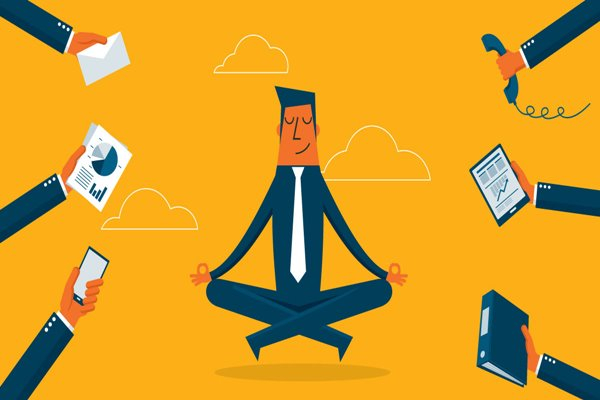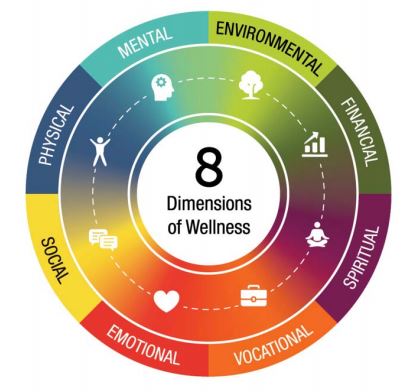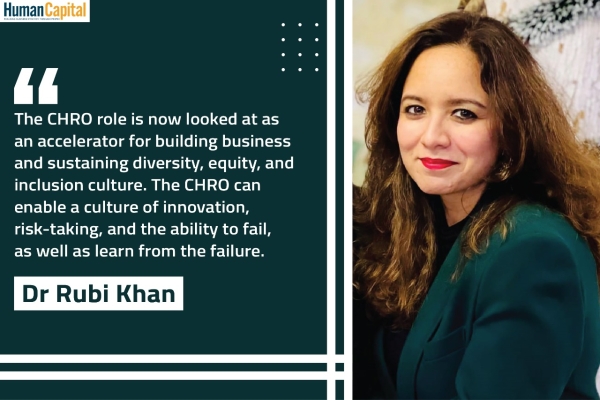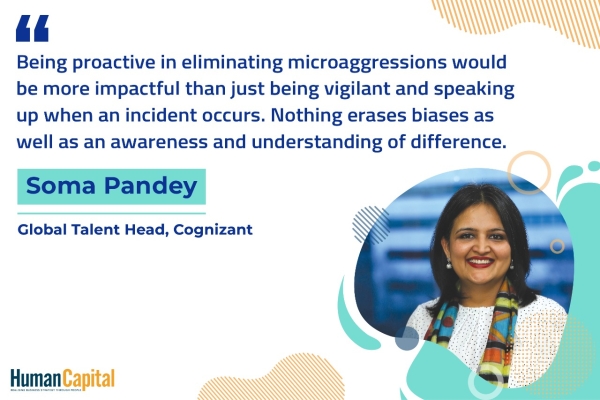Until the world of medicine can provide the protective shield in the form of a vaccine against COVID-19, HR professionals must don the hat of mentors, counsellors, guides, all rolled into one.
The motley group stays confined within the walls of the house. Tasks are shared amongst the constituents, almost in an un-documented but predefined manner, based on each individual’s age, gender, predilections, authority and other factors. There are windows to look out at the sparse streets and screens to look at and interact with other solitary souls.
No, this is not an upgraded version of the popular television show, Big Brother (or Big Boss, as it is titled here in India). This is just a screengrab from the life of an urban professional, who could be in any one of the cities across the globe today. Any resemblance to the aforementioned television show is purely coincidental. Only this time, there is no booming voice emerging out of the woodworks, outlining the next task or issuing punishment orders! And of course, it does bear mentioning that thankfully, it is not a group of random strangers handpicked and airdropped into the house, but family members.
The COVID-19 pandemic has indeed ushered in unprecedented changes in the way we are supposed to conduct ourselves, in the interest of safety. With no vaccine available currently, avoidance of the infection is the only weapon that humanity has to safeguard itself. This has led to the guidance and adherence to ‘social distancing’ from others. In effect, this has led to the germination of these mini, imitation ‘Big Brother houses’.
The fact is that since 1999, when this Dutch reality television show was launched, it has sprouted 448 seasons across 54 countries! In the interim 20 years, many psychologists and psychiatrists have studied the inmates, more granularly than the armchair viewers watching them in a voyeuristic manner. Unsurprisingly, research over the years has shown that the inmates in the ‘Big Brother house’ face many adverse physiological and psychological effects, including increased emotional sensitivity and dysphoria (a mood or state of uneasiness or discontentment) on account of being in the isolated confines of the house. Millions of working professionals who today are confined to their homes, with the requirement to adhere to social distancing under the ‘lockdown’ guidelines, are unknowingly, in a similar state. A state in which their wellness stands severely compromised.
The Global Wellness Institute defines wellness as the active pursuit of activities, choices, and lifestyles that lead to a state of holistic health. Now, one can argue that the onus of ensuring one’s well-being should lie on the individual himself or herself. However, in the world of business, this could be one of the most fatal mistakes that an organisation’s leader could make. After all, the success of an organisation is, more often than not, directly dependent on the quality of its people.
HR leaders across the globe, therefore, are facing a unique predicament. While employee engagement has always been a vital part of their job roles, addressing the well-being needs of their staff has become an equal, if not more, critical responsibility. This is compounded by the fact that a large number of their workforce is not even in the workplace.
In the words of Dr Aastha Sachdeva, Counselling Psychologist and Founder, CounSoul, “The biggest fear being faced by the employees in these unprecedented times is the fear of uncertainty and the fear of the unknown. Physical absence from the workplace not only creates a sense of social isolation, but heightened feelings of insecurity about their personal and professional lives, both, in the present and the future.”
This requires HR practitioners to build a fresh approach to address employee well-being across every dimension of wellness - physical, emotional, environmental, financial, intellectual, occupational, physical, social, and spiritual.
So, below mentioned are the primers to kick off on some levers that HR practitioners need to focus on –
1. Driving Remote Productivity:
For a culture that is largely based on the ‘boss-subordinate’ relationship, physical proximity has been an integral part of our environment. For the longest time, only a negligible percentage of employees were permitted to work outside of the office premises. Consequently, operational approaches and performance monitoring processes have always been centred around the largely in-house office workers.
Engagement has been measured by the daily ‘attendance’ in the office and efficiency has been measured by the shift duty ‘clock’. The revised approach in line with the ‘new normal’ will be to design systems that reward productivity, innovation, task completion and customer satisfaction.
2. Enabling Stress Management:
Today, ‘stress’ has become almost synonymous with corporate life. This is caused by diverse dimensions ranging from the daily commute the professional has had to undertake to his or her workplace, to the competition one has to face during the upward ascent to the corner office. With the economy getting disrupted extensively as a fall out of the pandemic, organisations have sped up their re-organisation efforts, amongst which job cuts have not been left behind. This has, in turn, led to insecurity amongst professionals, many of whom have already been facing the disruption of job roles by technology in the digital world. By summoning up all the empathy within themselves, HR leaders will need to assist their colleagues to reduce their stress levels, something that can be debilitating if left unchecked.
3. Encouraging Physical Activity:
In recent years, leaders have encouraged employees to focus on their health. Off-sites involving some amount of physical activities designed to increase collaboration and build teamwork have been very common. To convert this from a sporadic activity to an ongoing lifestyle approach, some organisations have even integrated distribution of fitness trackers into their wellness programmes and created a competitive environment based on hitting the minimum recommended daily target of 10,000 steps. With our homesteads in our urban centres being constrained in terms of the physical footprint for many forms of exercise, employees will have to be guided with innovating and following practices like Yoga and Pilates, which can be practised even in relatively smaller spaces.
4. Assisting Coping with Social Isolation:
Our workplaces are usually a humdrum of activity with interactions and conversations which tend to transcend the professional space and enter into the personal space as well. It is an aspect that many amongst us revel, unless of course, this has happened in bad faith or an unethical manner.
In the current scenario, social isolation has been forced, for the most part. Colleagues who were used to some light banter, junior team members who were used to some guidance from their supervisors and many others, have suddenly found themselves impaired. Replicating the social aspect of the workplace is probably the most difficult to do.
However, by strategically building in casual interaction sessions with colleagues or training sessions by experts over video conferencing, HR teams can ensure that employees get some breaks in between their work schedules.
5. Guiding with Technology taming:
One of the fallouts of remote environments is that not only is the screen an interface for official work, it is also the go-between your friends, family and entertainment. Consequently, this has led to a dramatic rise in the ‘screen time’ that individuals are exposing themselves to in the current period. As per a survey done by Ericsson, for an average Indian, this has increased by almost 2 hours daily post the initiation of the lockdown in India.
Moving a step beyond ‘Work-life balance’, HR professionals will need to think creatively to encourage employees to bring in the ‘Screen & Off-Screen’ balance.
Promoting podcasts, reading or even the humble voice call, can be some of the suggested mechanisms to this end.
Thankfully, while the basic tenets of wellness can be traced back to ancient civilizations in India, China, Greece and Rome, the study has been expanded greatly in the 19th century across the globe, and we have reached this heightened level of understanding of the subject today.
The tentacles of technology have also not spared this domain. According to the U.S. headquartered Limeade, that has developed a proprietary technology platform for enhancing employee well-being and employee engagement, when employees see their organisations care for them, multiple benefits accrue, such that employees are -
♦ 10 times more likely to recommend their company as a great place to work
♦ 4 times less likely to suffer from stress and burnout
♦ 2 times more likely to be engaged with the organisation and their work
Dr. Sachdeva, therefore, further guides, “At this time HR professionals need to play the role of change makers by supporting their community of people, keeping in touch with them, answering their queries while giving hope to them for a positive future. An organisational framework with access to counselling services and employee assistance programs needs to be developed in every workplace as a policy to ensure that we enter the post COVID era with a resilient workforce.”
Given this guidance, it is easy to absorb that there are multiple advantages of driving an active wellness programme, especially at a time like this. It is expected that HR professionals will seek to further the wellness agenda in their organisations with enthusiasm. Beyond the financial benefits that a healthy and motivated workforce provides, such efforts would also be a catalyst in ensuring that our society remains stable and strong. Till the time that the world of medicine is able to provide the protective shield in the form of a much needed vaccine against this invisible enemy, our HR professionals must don the hat of mentors, counsellors, guides, all rolled into one. This will be their single most valuable contribution in the war against the coronavirus.
Follow and connect with us on LinkedIn, Facebook, Instagram, Twitter for latest HR news and insights.
References:
1. Wikipedia
2. The New Wellness Revolution by Paul Zane Pilzer (Paperback)
3. https://globalwellnessinstitute.org/
5. Dr. Aastha Sachdeva, Clinical Psychologist and Founder, CounSoul
.jpg)
Are you comfortable working with dispersed colleagues?
Trending
-
SBI General Insurance Launches Digital Health Campaign
-
CredR Rolls Out 'Life Happens' Leave For Its Employees
-
Meesho Announces 30-Week Gender-Neutral Parental Leave Policy
-
Microsoft Unveils Tech Resilience Curriculum To Foster An Inclusive Future
-
60% Indian Professionals Looking For Job Change Due To COVID: Survey
-
SpringPeople And Siemens Collaborate For Digital Transformation Push
-
86% Professionals Believe Hybrid Work Is Essential For Work Life Balance: Report
-
Almost 1 In Every 3 People's Personal Life Affected Due To Work Stress
-
Meesho Rolls Out Reset And Recharge Policy For Employees
-
80% Of Talent Leaders & Academics Say Pandemic Changed Skill Needs For Youth: Report
-
Hero Electric Rolls Out 'Hero Care' Program For Employees
-
Human Capital In Collaboration With ASSOCHAM Hosts Virtual Conference
-
IKEA India, Tata STRIVE Collaborate To Create Employability And Entrepreneurship Opportunities
-
SAP India, Microsoft Launch Tech Skilling Program for Young Women
-
DXC Technology, NASSCOM Collaborate For Employability Skills Program
-
Lenskart To Hire Over 2000 Employees Across India By 2022
-
Mindtree Launches Learn-and-Earn Program
-
Tata AIA Extends 'Raksha Ka Teeka' To Its Employees
-
Swadesh Behera Is The New CPO Of Titan
-
NetConnect Global Plans To Recruit 5000 Tech Professionals In India
-
Hubhopper Plans To Hire 60% Of Indian Podcasters By 2022
-
Corporate India Needs More Women In Leadership Roles: Report
-
Aon to Invest $30 Million and Create 10,000 Apprenticeships by 2030
-
Tech Mahindra Launches ‘Gift a Career’ Initiative for Upskilling of Youth
-
40% Women Prefer Flexible Working Options in Post-COVID World: Survey
-
3 out of 4 companies believe they can effectively hire employees virtually: Report
-
Vodafone , CGI and NASSCOM Foundation launch digital skills platform
-
Odisha: Bank, postal employees to deliver cash for elderly, differently-abled persons
-
Skill India launches AI-based digital platform for "Skilled Workforce"
-
Hiring activity declines 6.73% in first quarter: Survey
-
70% startups impacted by COVID-19 pandemic
-
Bajaj Allianz Life ropes in Santanu Banerjee as CHRO
-
Over 70 Percent MSMEs look at cutting jobs to sustain businesses
-
93 Per Cent employees stressed about returning to office post-lockdown
-
Johnson & Johnson India announces family benefits for same gender partners
-
Indian firms turning friendly towards working mothers
-
Welspun India names Rajendra Mehta as new CHRO
-
Wipro partners with NASSCOM to launch Future Skills platform



Human Capital is niche media organisation for HR and Corporate. Our aim is to create an outstanding user experience for all our clients, readers, employers and employees through inspiring, industry-leading content pieces in the form of case studies, analysis, expert reports, authored articles and blogs. We cover topics such as talent acquisition, learning and development, diversity and inclusion, leadership, compensation, recruitment and many more.
Subscribe Now













































Comment